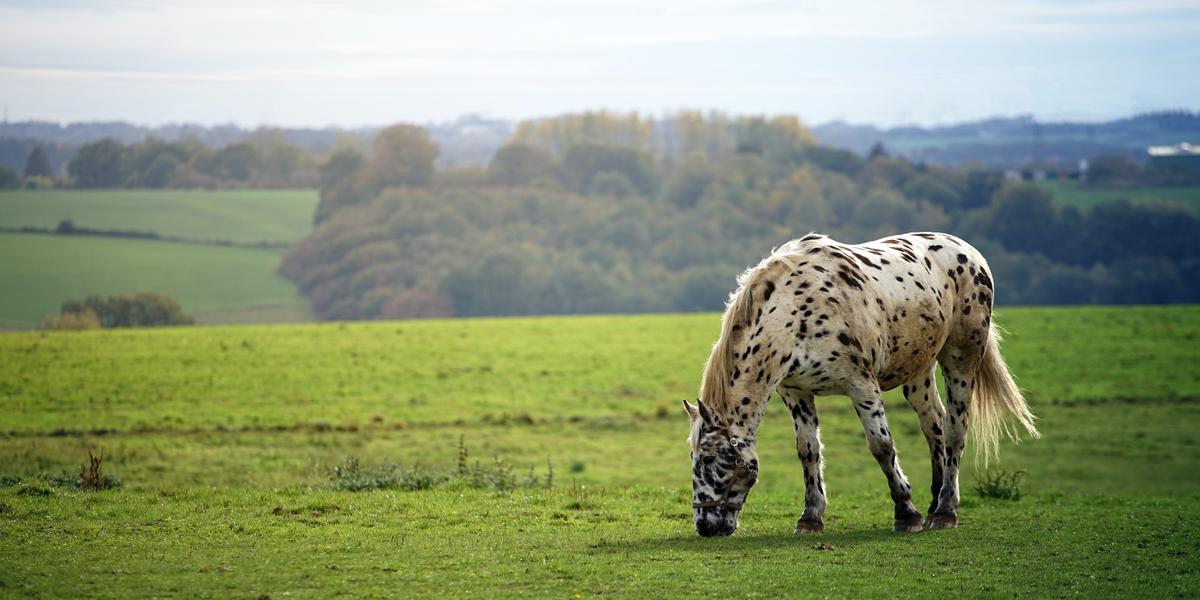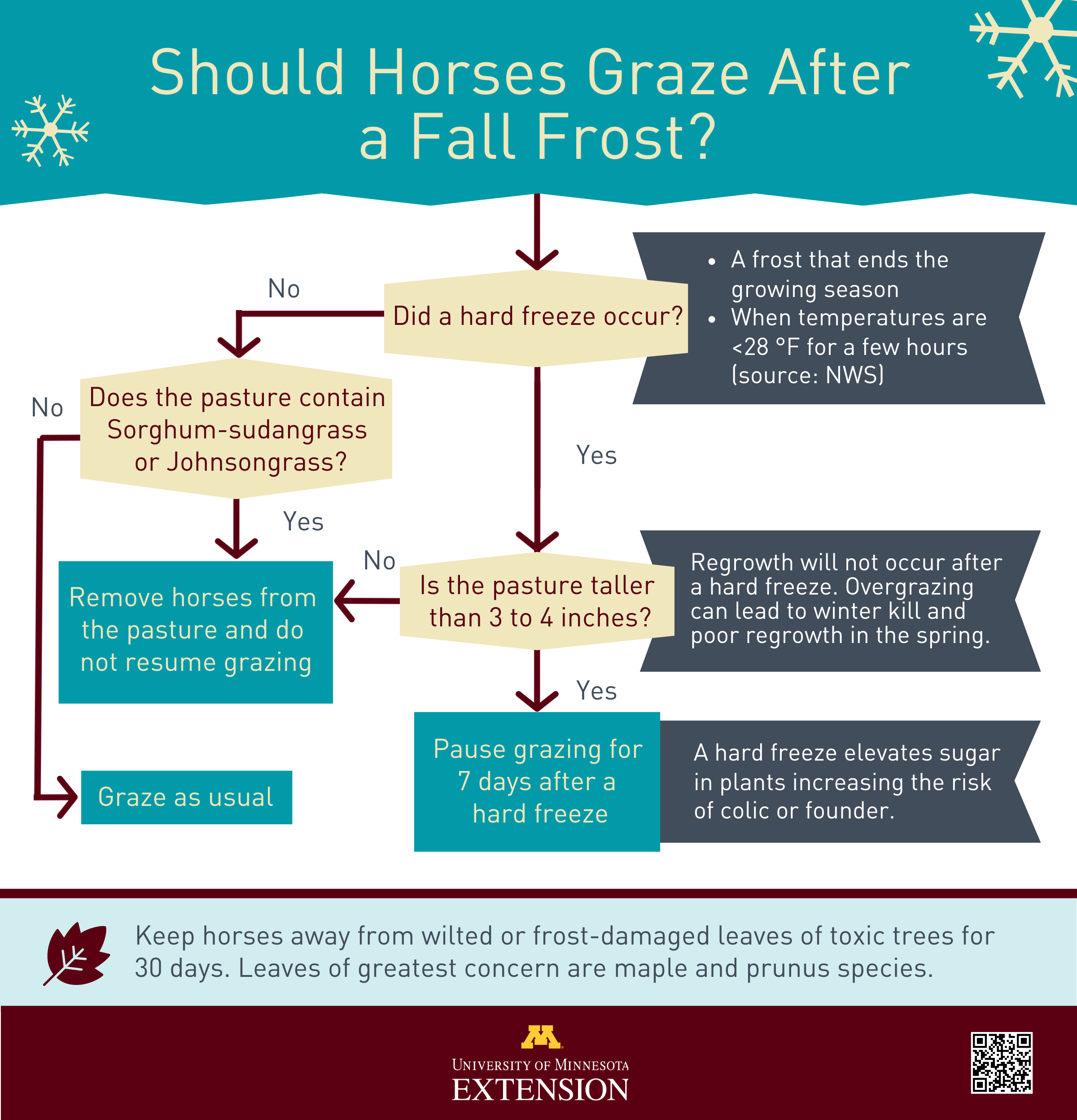Fall equine care
Tips to keep horses healthy and prevent pasture-associated illness

Tips to keep horses healthy and prevent pasture-associated illness
Sun-filled days, overnight frosts, and falling leaves herald the arrival of fall and an important time for horse owners to take steps to preserve their animals’ health during the seasonal transition.
While many people associate spring pastures with laminitis, fall can be just as risky, if not more so, according to Dr. Kerry Kuhle, associate professor with the University of Minnesota College of Veterinary Medicine. Laminitis refers to a condition where the tissue between the hoof and the underlying coffin bone becomes inflamed and damaged. One of its common causes is horses grazing in pastures with grasses that have a high sugar content.
Now is the time to think about moving horses prone to pasture-associated laminitis off pasture. That includes those with equine metabolic syndrome, pituitary pars intermedia dysfunction, or insulin resistance
Cool-season grasses are still making sugar via photosynthesis during the day, particularly on sunny days. They burn off these sugars overnight as they respire or fuel plant growth. When overnight temperatures fall below 40 degrees Fahrenheit, respiration stops and sugar levels accumulate. These sugars are concentrated at the base of the plant, so pastures that are shorter than 3–4 inches are even more of a danger for sugar-sensitive horses.
For horses who can still safely graze, it’s a good time to be introducing hay as a transition to winter feeding.
“If you haven’t already begun, keep in mind that changes in forage can cause more disruption to the microbial population in your horse’s hindgut than changes in concentrates,” Kuhle says. “Slowly increasing the amount of hay offered over a 7-21 day period will help avoid episodes of colic and diarrhea caused by rapid changes in the microbial population.”
Frequent forage changes are a risk factor for colic, so owners should try to secure a consistent supply (same lot, same cutting) to get through the winter.
Lastly, fall is prime time for exposure to toxic plants that blow onto pastures, such as box elder and red maple. When pastures are sparse and supplemental hay isn’t available, the leaves of these trees are too tempting to pass up and horses can suffer lethal consequences.
Is your horse ready for fall? Here are checklists to help you and your equine prepare.
Horse owners should consult with a veterinarian to:
Horse owners should take steps to:
